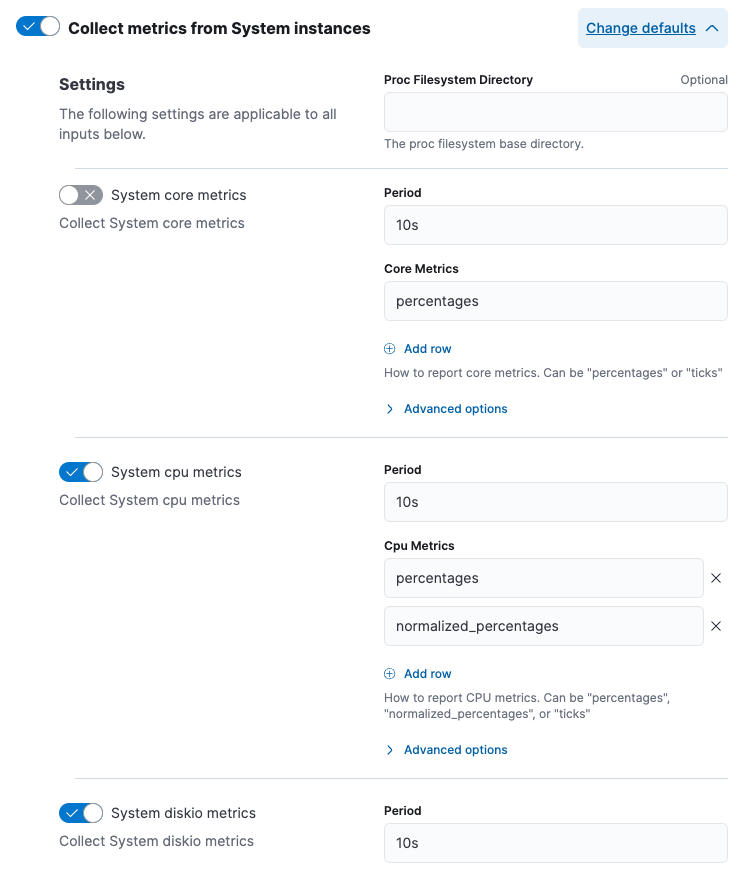- Observability: other versions:
- Get started
- What is Elastic Observability?
- What’s new in 8.16
- Quickstart: Monitor hosts with Elastic Agent
- Quickstart: Monitor your Kubernetes cluster with Elastic Agent
- Quickstart: Monitor hosts with OpenTelemetry
- Quickstart: Unified Kubernetes Observability with Elastic Distributions of OpenTelemetry (EDOT)
- Quickstart: Collect data with AWS Firehose
- Add data from Splunk
- Applications and services
- Application performance monitoring (APM)
- Get started
- Learn about data types
- Collect application data
- View and analyze data
- Act on data
- Use APM securely
- Manage storage
- Configure APM Server
- Monitor APM Server
- APM APIs
- Troubleshooting
- Upgrade
- Release notes
- Known issues
- Synthetic monitoring
- Get started
- Scripting browser monitors
- Configure lightweight monitors
- Manage monitors
- Work with params and secrets
- Analyze monitor data
- Monitor resources on private networks
- Use the CLI
- Configure projects
- Multi-factor Authentication
- Configure Synthetics settings
- Grant users access to secured resources
- Manage data retention
- Use Synthetics with traffic filters
- Migrate from the Elastic Synthetics integration
- Scale and architect a deployment
- Synthetics support matrix
- Synthetics Encryption and Security
- Troubleshooting
- Real user monitoring
- Uptime monitoring (deprecated)
- Tutorial: Monitor a Java application
- Application performance monitoring (APM)
- CI/CD
- Cloud
- Infrastructure and hosts
- Logs
- Troubleshooting
- Incident management
- Data set quality
- Observability AI Assistant
- Reference
Understanding "no results found" message
editUnderstanding "no results found" message
editTo correctly render visualizations in the Observability UI, all metrics used by the UI must be present in the collected data. For a description of these metrics, refer to Metrics reference.
There are several reasons why metrics might be missing from the collected data:
The visualization requires a metric that’s not relevant to your monitored hosts
For example, if you’re only observing Windows hosts, the load metric is not collected because load is not a Windows concept. In this situation, you can ignore the "no results found" message.
You may not be collecting all the required metrics
This could be for any of these reasons:
-
The integration that collects the missing metrics is not installed. For example, to collect metrics from your host system, you can use the System integration. To fix the problem, install the integration and configure it to send the missing metrics.
Follow one of our quickstarts under Observability → Add data to make sure the correct integrations are installed and all required metrics are collected.
-
You are not using the Elastic Distribution of the OpenTelemetry Collector, which automatically maps data to the Elastic Common Schema (ECS) fields expected by the visualization.
Follow our OpenTelemetry quickstart under Observability → Add data to make sure OpenTelemetry data is correctly mapped to ECS-compliant fields.
-
You have explicitly chosen not to send these metrics. You may choose to limit the metrics sent to Elastic to save on space and improve cluster performance. For example, the System integration has options to choose which metrics you want to send. You can edit the integration policy to begin collecting the missing metrics. For example:
